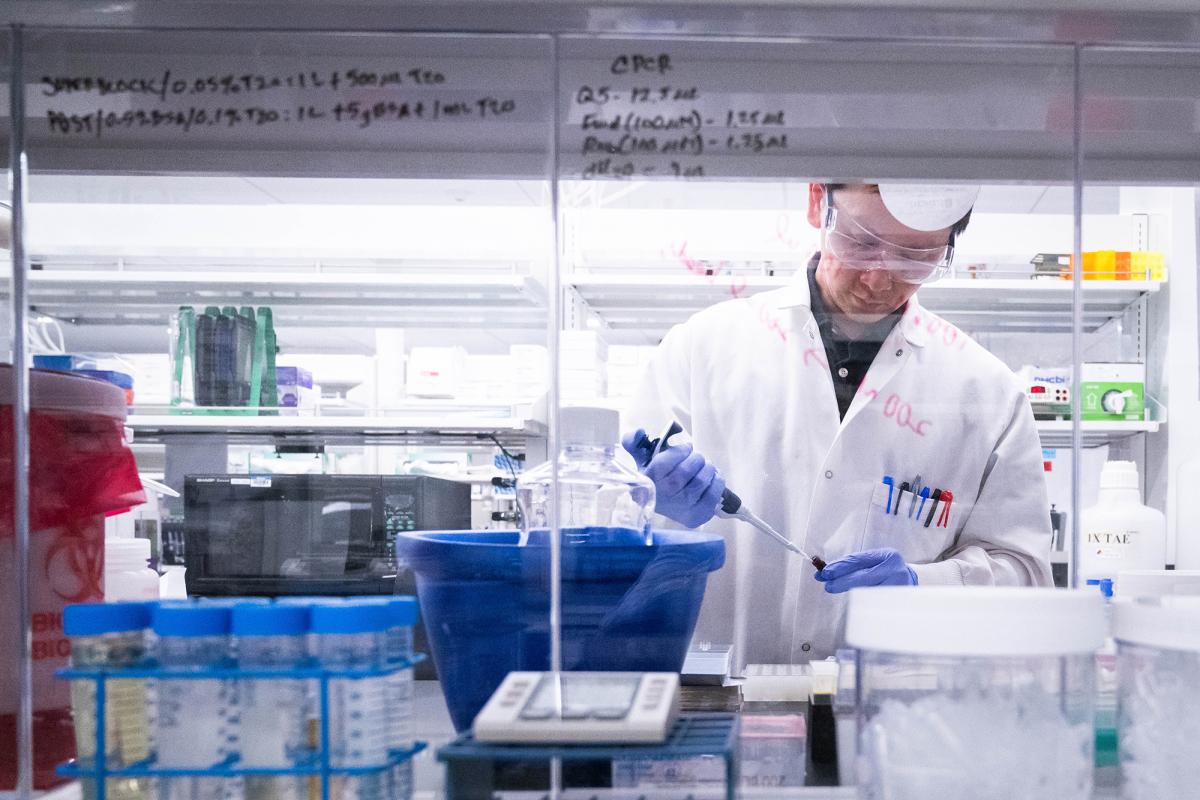Science
U.S. Strategy to Compete in Global Biotech Sector

The United States is embarking on a strategic initiative aimed at strengthening its position in the global biotechnology sector, particularly in competition with China. A recent report highlights that Washington must focus on unleashing the private sector to drive innovation and investment in biotechnology. This shift is crucial as the U.S. seeks to maintain its leadership in a field where China has made significant advancements.
Historically, the U.S. has been a dominant player in biotechnology, with a robust ecosystem characterized by world-class research institutions and a thriving startup environment. However, China’s aggressive investments and rapid advancements in biotechnology pose a serious challenge. According to the Biotechnology Innovation Organization, the U.S. biotechnology sector is projected to generate approximately $1.9 trillion in revenue by 2022, but this growth could be jeopardized if proactive measures are not taken.
Fostering Private Sector Growth
Experts emphasize that the U.S. must create an environment conducive to private sector growth in biotechnology. This includes increasing funding for research and development, streamlining regulatory processes, and providing incentives for innovation. The National Institutes of Health (NIH) plays a crucial role in this landscape, as it invests heavily in biomedical research. However, the NIH alone cannot sustain the industry’s growth; collaboration with private companies is essential.
One avenue for fostering this collaboration is through public-private partnerships. By combining resources and expertise, the U.S. can enhance its research capabilities and accelerate the development of new therapies and technologies. As noted by industry leaders, such partnerships can lead to groundbreaking advancements that benefit both the public and private sectors.
Furthermore, there is a pressing need for the U.S. to prioritize education and workforce development in biotechnology. As the sector evolves, a skilled workforce equipped with advanced knowledge and technical skills is vital. Educational institutions must adapt their curricula to meet the demands of the industry, ensuring that students are prepared for future challenges.
Addressing Regulatory Challenges
Regulatory hurdles can impede innovation and slow down the introduction of new products to the market. Streamlining these processes is crucial for maintaining competitiveness. The U.S. Food and Drug Administration (FDA) has made strides in recent years to expedite the approval of therapies, but further reforms are necessary to keep pace with international competition.
The emphasis on regulatory reform aligns with the broader goal of fostering innovation in the biotech sector. By simplifying approval pathways, the U.S. can encourage more companies to invest in research and development, ultimately leading to more breakthroughs in healthcare and other applications.
As the race in biotechnology intensifies, it is essential for the U.S. to harness the strengths of its private sector while addressing the challenges that lie ahead. By focusing on collaboration, education, and regulatory reform, Washington can position itself to not only compete but thrive in the global biotechnology landscape. The coming years will be critical as the U.S. seeks to reclaim its leadership and ensure that it remains at the forefront of biotechnological advancements.
-

 Lifestyle5 months ago
Lifestyle5 months agoLibraries Challenge Rising E-Book Costs Amid Growing Demand
-

 Sports4 months ago
Sports4 months agoTyreek Hill Responds to Tua Tagovailoa’s Comments on Team Dynamics
-

 Sports4 months ago
Sports4 months agoLiverpool Secures Agreement to Sign Young Striker Will Wright
-

 Lifestyle4 months ago
Lifestyle4 months agoSave Your Split Tomatoes: Expert Tips for Gardeners
-

 Lifestyle4 months ago
Lifestyle4 months agoPrincess Beatrice’s Daughter Athena Joins Siblings at London Parade
-

 Science4 months ago
Science4 months agoSan Francisco Hosts Unique Contest to Identify “Performative Males”
-

 World4 months ago
World4 months agoWinter Storms Lash New South Wales with Snow, Flood Risks
-

 Science5 months ago
Science5 months agoTrump Administration Moves to Repeal Key Climate Regulation
-

 Business5 months ago
Business5 months agoSoFi Technologies Shares Slip 2% Following Insider Stock Sale
-

 Science5 months ago
Science5 months agoNew Tool Reveals Link Between Horse Coat Condition and Parasites
-

 Sports5 months ago
Sports5 months agoElon Musk Sculpture Travels From Utah to Yosemite National Park
-

 Science5 months ago
Science5 months agoNew Study Confirms Humans Transported Stonehenge Bluestones









